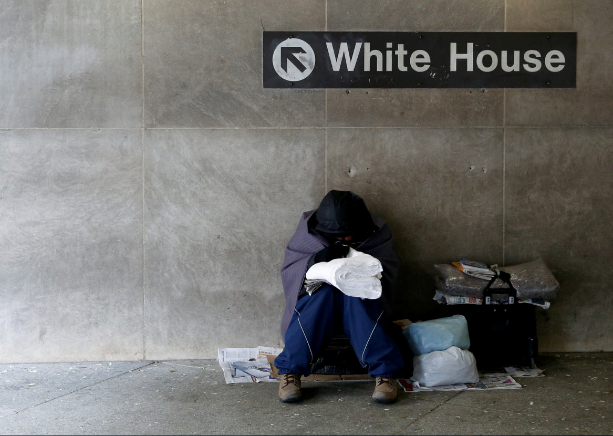« back
Outcomes or opportunities: what should equality really look like?
 January 2018 / Justine Boillat, Academic Trainee, Quality Assurance and Poverty Reduction Section, Swiss Agency for Development and Cooperation (SDC)
January 2018 / Justine Boillat, Academic Trainee, Quality Assurance and Poverty Reduction Section, Swiss Agency for Development and Cooperation (SDC)
 "Inequality is under attack – but what should equality really look like?" This is the question asked by a recent article of the Guardian's Inequality Project.
Looking back at 2017, there has been a growing outrage against
inequalities – gender inequalities, racial inequalities, economic
inequalities. Now, looking ahead, how shall we tackle these inequalities
and work towards a truly equal world? The author Jo Littler argues that
equality will only be achieved if we shift the focus from inequalities
of opportunity to inequalities of outcomes: "we need to move away
from the tired lies of "equality of opportunity", "meritocracy" and
"social mobility". Instead, we need to work for equality in terms of
actual results and outcomes".
"Inequality is under attack – but what should equality really look like?" This is the question asked by a recent article of the Guardian's Inequality Project.
Looking back at 2017, there has been a growing outrage against
inequalities – gender inequalities, racial inequalities, economic
inequalities. Now, looking ahead, how shall we tackle these inequalities
and work towards a truly equal world? The author Jo Littler argues that
equality will only be achieved if we shift the focus from inequalities
of opportunity to inequalities of outcomes: "we need to move away
from the tired lies of "equality of opportunity", "meritocracy" and
"social mobility". Instead, we need to work for equality in terms of
actual results and outcomes".
This
article echoes an ongoing debate among development practitioners and
academics about the conception of inequality and how development
policies should address it. Inequality of outcomes refers to what people
actually have: the level of income, but also of other dimensions of
human well-being such as education, health and nutrition. On the other
hand, the opportunity-perspective on inequality focuses on providing
equal access to education, to health or to the labour market to all
people regardless of the circumstances of their birth: their sex, race,
geographic location or other social, economic and cultural factors. In
this perspective, once the equality of chances is secured, remaining
inequalities of outcomes depend on individual's efforts and talents. The
idea of equality of opportunity has been taking a growing importance in
the public discourse, particularly in neo-liberal western societies.
Hypothetically,
in a truly fair society, equal opportunities would indeed favour upward
social mobility. In reality, however, evidence shows that economic
inequality and inequality of opportunities are strongly correlated:
children's chances in life are firmly determined by their parents'
socio-economic conditions. Wealth begets wealth, through what Oxfam
called the "privilege cascade": the wealthiest have a greater influence
on the political landscape and institutions, leading to an overwhelming
representation of their interests. This political capture implies that
public policies tend to reproduce the conditions that are deepening
inequality of rights and opportunities, benefiting the privileged
classes rather than the whole population. Resources such as public
expenditure, access to quality education or to profitable jobs are
therefore concentrated in the hands of a few, providing them with
increased opportunities while the majority of the population risks to be
left behind.
As a result, inequalities continue to rise globally. The 2018 World Inequality Report
shows that, since 1980, the top 1% of the population captured twice as
much growth as the bottom half of the world population, while the top
0.1% captured about as much growth as the bottom 50%. But, within the
equality of opportunity approach, the prominence of individual
responsibility seems to justify massive inequality of outcomes, as long
as everyone starts on a level playing field.
To
reduce inequalities, it is therefore fundamental to address
inequalities of outcomes. In fact, equality of opportunity and equality
of outcomes are two sides of the same coin: one cannot be reached
without the other. Reaching true equality requires to put in place and
enforce fair taxation, and to thoroughly rethink redistribution
policies. It also requires to deeply address issues of power and
discrimination that lead to unequal distribution of resources. This is
fundamental to create an environment that allows actual equality of opportunities and foster transformative change towards equal societies.
Related references:
 Briefing
Paper on Global Inequalities
Briefing
Paper on Global Inequalities
Sources:
 Inequality
is under attack – but what should equality really look like? by Jo Littler,
the Guardian, 4 January 2018
Inequality
is under attack – but what should equality really look like? by Jo Littler,
the Guardian, 4 January 2018
 World
Inequality Report 2018
World
Inequality Report 2018
 Inequality
of what? Inequality between whom? UNDP, Humanity Divided: confronting
inequality in developing countries (chapter 1)
Inequality
of what? Inequality between whom? UNDP, Humanity Divided: confronting
inequality in developing countries (chapter 1)
 Working
for the few. Oxfam, 2014
Working
for the few. Oxfam, 2014
Photo: https://www.theguardian.com/inequality/2018/jan/04/inequality-is-under-attack-but-what-should-equality-really-look-like
